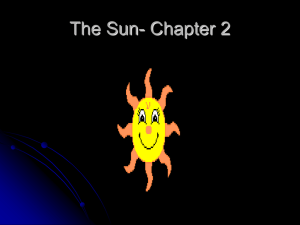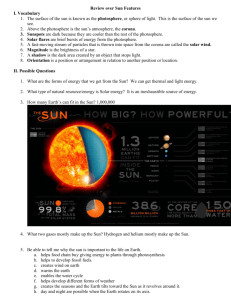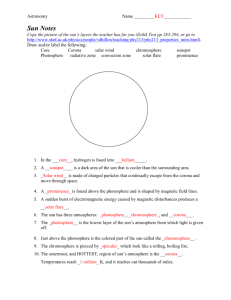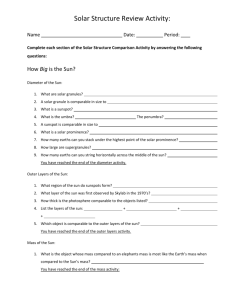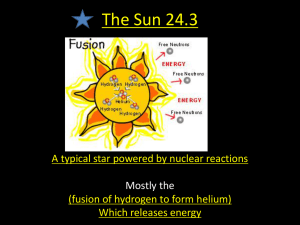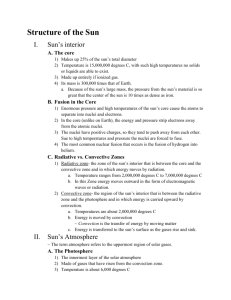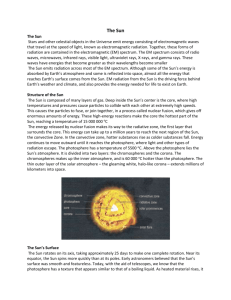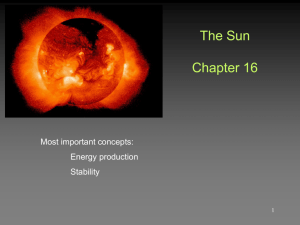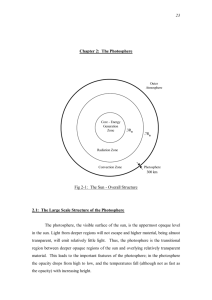Chapter 24.3 – The Sun I. Structure of the Sun – divided into four
advertisement
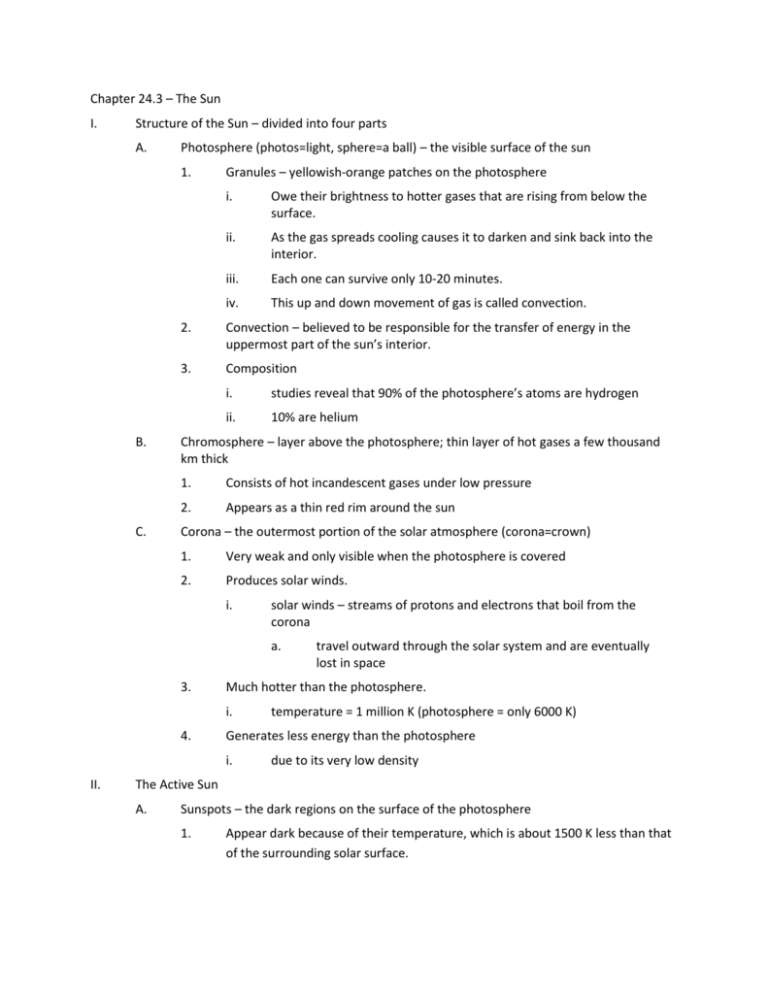
Chapter 24.3 – The Sun I. Structure of the Sun – divided into four parts A. Photosphere (photos=light, sphere=a ball) – the visible surface of the sun 1. B. C. Granules – yellowish-orange patches on the photosphere i. Owe their brightness to hotter gases that are rising from below the surface. ii. As the gas spreads cooling causes it to darken and sink back into the interior. iii. Each one can survive only 10-20 minutes. iv. This up and down movement of gas is called convection. 2. Convection – believed to be responsible for the transfer of energy in the uppermost part of the sun’s interior. 3. Composition i. studies reveal that 90% of the photosphere’s atoms are hydrogen ii. 10% are helium Chromosphere – layer above the photosphere; thin layer of hot gases a few thousand km thick 1. Consists of hot incandescent gases under low pressure 2. Appears as a thin red rim around the sun Corona – the outermost portion of the solar atmosphere (corona=crown) 1. Very weak and only visible when the photosphere is covered 2. Produces solar winds. i. solar winds – streams of protons and electrons that boil from the corona a. 3. Much hotter than the photosphere. i. 4. temperature = 1 million K (photosphere = only 6000 K) Generates less energy than the photosphere i. II. travel outward through the solar system and are eventually lost in space due to its very low density The Active Sun A. Sunspots – the dark regions on the surface of the photosphere 1. Appear dark because of their temperature, which is about 1500 K less than that of the surrounding solar surface. B. Prominences (prominere = to jut out) – huge cloudlike structures consisting of chromospheric gases 1. C. These are ionized gases trapped by magnetic fields that extend from regions of intense solar activity. Solar Flares – brief outbursts that normally last about an hour and appear as a sudden brightening of the region above a sunspot cluster. 1. During their existence, solar flares release enormous amounts of energy, much of it in the form of ultraviolet, radio, and x-ray radiation. 2. Auroras – result of solar flares; also known as the northern and southern lights. i. III. Following a strong solar flare, Earth’s upper atmosphere near its magnetic poles is set aglow for several nights. The Solar Interior A. Nuclear fusion – nuclear reaction that converts four hydrogen nuclei into the nucleus of a helium atom. 1. How the sun produces energy 2. During nuclear fusion, energy is released because some matter is actually converted to energy. 3. E=mc2 (e=energy, m=mass, c=speed of light) i. 4. Because the speed of light is very great, the amount of energy released from even a small amount of mass is enormous. To initiate nuclear fusion, the sun’s internal temperature must have reached several million degrees.

